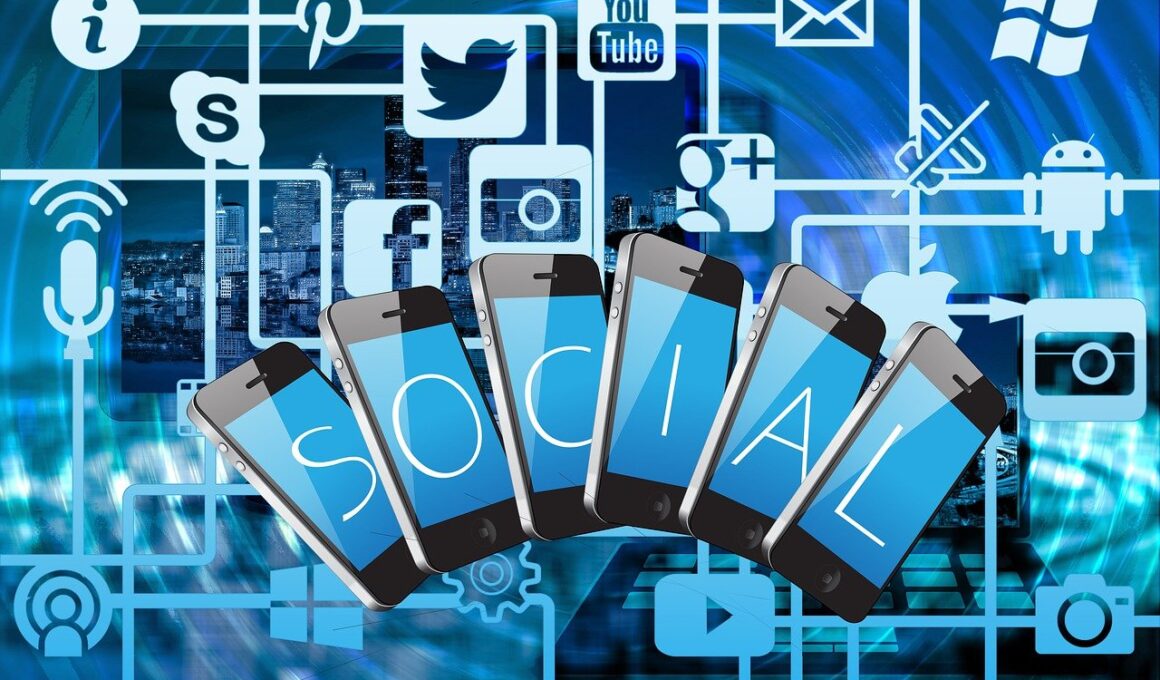Scheduling and Automation Tools That Increase Social Engagement Efficiency
In today’s fast-paced digital landscape, leveraging scheduling and automation tools is essential for boosting social media engagement. These tools enable brands to plan their content in advance, ensuring a consistent online presence. Popular options like Buffer and Hootsuite allow users to manage multiple accounts from a single dashboard. With these tools, you can analyze your audience’s behavior and schedule posts for peak engagement times. Automation streamlines the posting process and reduces the manual efforts involved in daily social media management. Moreover, using tools with analytics features can help refine your content strategy over time. By reviewing engagement metrics, brands can adjust their messaging to resonate better with followers. Advanced scheduling techniques, such as strategically timed posts on weekdays or optimal hours, can significantly improve engagement rates. Additionally, using automated responses for FAQs enhances customer interaction without sacrificing the personal touch. Investing in these tools not only improves efficiency but also frees up valuable time to create high-quality content. As social media continues to evolve, utilizing automation strategically can be the key to sustained success.
One major advantage of social media scheduling tools is their ability to keep your content consistent across platforms. Consistency is crucial in building brand identity and trust with your audience. When your followers know when to expect new content, they are more likely to remain engaged. Utilizing visual scheduling tools like Later allows brands to plan their Instagram feeds visually, ensuring aesthetic uniformity. This kind of strategic planning minimizes the chances of posting last-minute content that doesn’t align with your brand voice. Moreover, using automation for post-sharing ensures that your content operates around the clock, even when you’re not online. This maximized exposure increases the likelihood of reaching different audience segments in various time zones. Tools like Sprout Social offer robust analytics to analyze which posts performed well, allowing brands to replicate their successes. Moreover, leveraging features like social listening enables brands to respond to relevant conversations in real-time. This can boost engagement significantly by positioning your brand as an active participant in trending discussions. Harnessing these scheduling tools effectively leads to improved user engagement and brand advocacy.
Leveraging Artificial Intelligence for Engagement
As technology continues to advance, many scheduling tools are incorporating AI to optimize social media engagement. AI-driven platforms like MeetEdgar can automatically recycle evergreen content, keeping your social media presence lively. This ensures that valuable posts reach new followers while minimizing the amount of fresh content required. Moreover, AI can analyze user engagement patterns to suggest the best time to post based on historical data and trends. This data-centric approach enables brands to craft their content and timing for maximum impact. Additionally, AI can assist in generating captions or optimizing hashtags to enhance visibility. By automating routine tasks and using AI-generated insights, social media managers can focus on developing creative campaigns. AI also personalizes customer interaction based on past engagements, enhancing user experiences. Tools like Canva now feature AI to recommend design elements aligned with current social trends, making visuals more appealing. With AI in the mix, brands can maintain meaningful connections with their audience while also optimizing their outreach strategies efficiently.
Another essential aspect of scheduling tools is their collaboration features. When working with teams, these functionalities streamline the content creation process. Platforms such as Trello and Asana integrate with scheduling tools to keep track of content creation workflows. This ensures everyone remains aligned on campaigns and prevents duplication of efforts. With shared calendars, all team members can see upcoming posts and deadlines. This reduces the chances of forgetting important dates and helps maintain a steady posting routine. Additionally, collaboration allows for feedback loops that can enhance content quality. By reviewing peers’ content, teams can identify improvement areas and brainstorm innovative ideas. Also, scheduling tools often provide direct links for approvals, expediting posting workflows. Overall, collaboration features significantly foster teamwork and creativity, enhancing the quality of engagement-boosting content. Moreover, embracing a team-oriented approach can lead to more diverse content styles that appeal to broader audience segments. The combination of team efforts and scheduling tools creates a powerful synergy that drives social media success.
The Importance of Analytics in Scheduling Tools
Analytics are crucial in refining social media strategies, and most scheduling tools offer robust insights. Understanding which content resonates with your audience allows for continual optimization. With platforms like Buffer and Hootsuite, you can access engagement metrics such as likes, shares, clicks, and comments. Analyzing these metrics provides valuable information about user preferences and peak engagement times. Additionally, by tracking performance trends over time, marketers can identify the types of content that drive the most engagement. This investment in understanding user behavior means that brands can produce more of what works and less of what does not. Furthermore, setting specific performance benchmarks allows for the evaluation of content effectiveness. If a certain style or topic is underperforming, adjustments can be made to improve overall engagement. As you gather data, segmentation tools help tailor content to different audience demographics, increasing relevance. Through this methodical approach, brands can create targeted campaigns that speak directly to their core audience, ultimately boosting engagement and fostering community.
Incorporating user-generated content (UGC) is another engaging strategy that scheduling tools can facilitate. Many brands have successfully harnessed UGC to deepen connections with their audience. Scheduling tools allow brands to plan posts that feature UGC seamlessly within their overall content calendar. This authentic content helps promote community participation and creates a sense of belonging among followers. Moreover, UGC increases trust, as potential customers often appreciate social proof from their peers. Encouraging UGC can be as simple as hosting contests or encouraging followers to share their experiences with your product. Scheduling tools can automate the invitation process and reminders, ensuring a consistent push for user submissions. Additionally, leveraging UGC can lower content creation expenses, allowing brands to focus resources elsewhere. Engaging with and showcasing your audience not only enriches your content feed but also invites followers to interact more deeply with your brand. Overall, UGC integration into your scheduling strategy can be a game-changer for enhancing social media interactions.
Conclusion: Elevating Your Social Engagement Strategy
In conclusion, using scheduling and automation tools effectively is vital for enhancing social media engagement. These tools improve efficiency while providing insights into audience behavior and posting strategies. Brands that adopt a systematic approach by scheduling posts, analyzing engagement metrics, and collaborating with teams are likely to succeed in building robust online communities. Incorporating AI can further optimize these efforts, making interactions more meaningful and personalized. Balancing automated systems with human creativity often leads to standout content that resonates with audiences. As social media evolves, staying proactive and open to new strategies becomes increasingly essential. Brands that capitalize on user-generated content and foster real connections will likely cultivate loyalty and community engagement. A comprehensive approach to social media management can ultimately attract and retain followers, driving business success. Whether you’re a small brand or a large corporation, utilizing these engagement-boosting techniques will be key to navigating the complexities of social media. It’s time to leverage the power of scheduling tools and take your social engagement strategy to new heights.
This is another paragraph with exactly 190 words…


